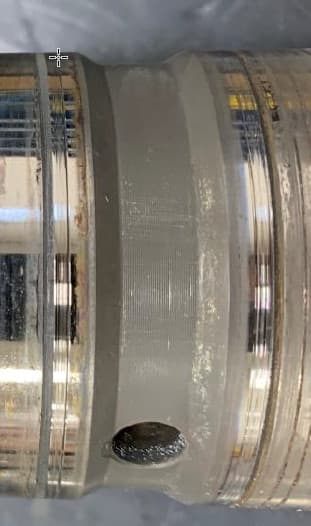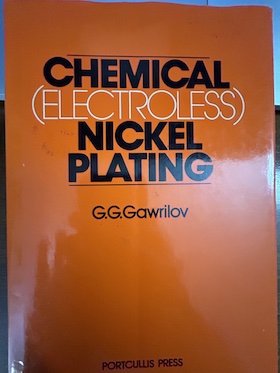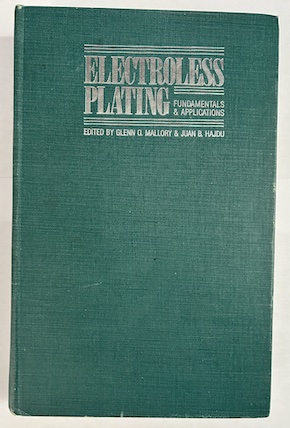
-----
Electroless Nickel (EN) Plating on Leaded Steel Alloys
Q. Hello, I work for an OEM manufacturer of equipment of converting equipment. We are having an issue with the plating on a rotating shaft in a rotary union which delivers a water-based lubricant to a cutting operation. The base material of the shaft is 12L14 steel, and it is plated with electroless nickel. The surfaces of the shaft which are in contact with the seals retains the nickel well, except where the seals directly contact the shaft. The void area between the seals where the lubricant travels, which are a lathe-turned finish, shows almost a complete loss of nickel after 6 weeks of use. My theory is that the material being lost from the surface in the void area is getting under the seals and causing rapid wear of the plating and into the base metal.

Is there a minimum recommended surface finish to ensure a uniform layer of nickel without porosity? I realize also that a proper cleaning cycle, including fluoboric acid, is needed to remove smeared lead from all surfaces. Mark Fritsche
- Green Bay, Wisconsin
Ed. note: While awaiting readers' replies, this thread and thread 32954, "Poor adhesion of Electroless Nickel Plating onto steel", may be helpful
⇩ Related postings, oldest first ⇩
2002
Q. We need to plate Electroless Nickel onto Leaded steel alloys such as 12L17. Under the Microscope we are experiencing pits in the nickel. Can anyone suggest a preplate treatment strike? etc. We suspect the lead oxide is the cause of the problem.
Jim Kronus- Escondido, California
November 2, 2021
A. Clean-Rinse-Dip in 50%/vol Fluoboric Acid-Rinse- then plate in anything. Lead forms insolubles in Sulfuric Acid and Hydrochloric Acid. Lead does not form an insoluble in Fluoboric Acid.
Ideally you would strike and/or plate in a Fluoboric Acid Matrix Nickel solution.
Take two aspirin and call me in the morning.

Robert H Probert
Robert H Probert Technical Services
Garner, North Carolina

2002
by G. G. Gawrilov

on eBay or Amazon
or AbeBooks
(affil link)
A. I agree with the previous reply, a dip in fluoboric acid will solve your problem.

Sara Michaeli
Tel-Aviv-Yafo, Israel
2002
A. You can also overcome adhesion problems with a copper strike underlayer.
Gabriel SchonwaldBnei Berak, Israel
2002
Q, A, or Comment on THIS thread -or- Start a NEW Thread

